Long distance beekeeping
This post was originally entitled ‘lockdown beekeeping’. I changed it in the hope that, at some point in the future, we’ve all forgotten lockdown and are back to the ‘old normal‘. Instead, long distance beekeeping, better summarises the topic and might rank better in future Google searches …
But before I start, here’s some general advice …
Don’t do as I do, do as I say (elsewhere on this site 😉 )
I don’t think what I’m going to describe below was anything like ideal. In the end it worked out pretty well, but probably as much from luck as judgement. I’d do it again if I had to, but I’d prefer not to. I don’t think it is a workable solution for effective beekeeping in anything other than exceptional circumstances.
But 2020 has been an exceptional circumstance …
Mid-March madness
It was abundantly clear in very early March that a lockdown was inevitable {{1}} to restrict the spread of Covid-19. All the numbers were going in the wrong direction and other countries were already imposing quite draconian restrictions to control virus transmission {{2}}.
I had speaking engagements with Oban & District BKA on the 12th and at the SNHBS event at Kinross on the 14th and, on the following day, I disappeared to my bolthole on the remote west coast of Scotland.
I decided to simply abandon the bees in Fife for at least a month while the country came to terms with movement restrictions, supermarket food deliveries, protecting the NHS and ‘working from home’.
On the day I left I checked that colonies were not too light, that the entrances were clear and that the roofs were secure and everything was strapped down.
March is too early to do anything with bees in Fife and my first inspections are usually not until mid/late April in a normal year, and even early May if there’s been a cold Spring. I therefore had a month to plan for the season ahead, with the expectation that I would have to manage the bees with the minimum possible number of visits for the next few months.
Planning
The beekeeping season contains a number of ‘moveable fixtures’.
By that I mean that certain things happen every season, but the time when they happen is not fixed. The timing depends upon the weather which, in turn, influences forage availability. It depends upon the strength of the colony, the location of the apiary and – for all I know – the phase of the moon.
Warm springs can lead to swarming by the end of April. Conversely, cold springs delay events. Dry summers generally put paid to the lime nectar and a protracted June gap can leave colonies starving in the middle of the season.
In the previous post I called these moveable fixtures the unknown knowns.
The variable timing of these moveable fixtures influences colony management by the beekeeper; this includes the spring honey harvest, swarm control and the summer honey harvest. In addition, it includes more mundane things like comb exchange, feeding the colony up for winter and Varroa management.
Bees and beekeeping are influenced by the environment, not the calendar {{3}}.
The UK government imposed a nationwide lockdown on the 23rd of March 2020. Movement restrictions were imposed, including the distance you could travel from where you live.
Exemptions were made for allowed activities and, after lobbying from national associations and others, beekeeping was included as an exempt activity. Notwithstanding this, it was not going to be practical to conduct the usual weekly inspections from April until late July.
First inspections
I returned to Fife to conduct the first inspections in the third week of April. The spring was well advanced and the strong colonies were really booming. The overwintered nucs had built loads of brace comb in the space over the top bars and urgently needed to be moved to a full hive.
There were about 20 colonies spread between my two main apiaries. All were checked for space/strength, temper and the presence of a laying, marked and clipped queen {{4}}. I didn’t have time to mollycoddle any weak colonies so these (having checked they were healthy) were united with nearby strong colonies.
In addition, I didn’t have the luxury of time to see if poorly behaved colonies might pick up later in the season. To be frank, I had more colonies than I needed (or could easily cope with). With the need for swarm control looming, I decided to reduce colony numbers by uniting de-queened aggressive colonies with others in the same apiary. There were only a couple of these (identified the previous season and seemingly unimproved after the winter) … but every little bit helps.
Finally, with the oil seed rape about to flower, I added three supers to the majority of the colonies. In a normal season these would have been added incrementally as needed. This year I had to assume (or hope) they might need them.
Swarm control
On my return to the west coast the spring was warming up. The primroses were looking fantastic and we had several weeks of outstanding weather.
I enjoyed the good weather and spent the time fretting about the timing of swarm control.
My colonies tend to make swarm preparations between mid-May and the first week of June – a good example of a moveable fixture.
A priority this year was not to lose any swarms.
I did not want to inconvenience other beekeepers (or ‘civilians’ {{5}}) with swarms I managed to lose by ineptly doing my beekeeping from the other side of the country.
With most people trying to keep themselves isolated, 30,000 bees moving into a chimney would be a lot more than unwelcome.
Even in a normal year I do my very best not to lose swarms, and this was anything but a normal year.
I therefore decided to conduct pre-emptive swarm control on every colony in the third week of May. ‘Pre-emptive’ meaning that, whether the colonies showed any signs of swarming or not, I’d remove the queen and let them rear another.
Colonies do not swarm every year. Every now and again a strong colony of mine will show no inclination to swarm. These are great … I just pile another super or two on top and am thankful not to have to intervene.
However, strong colonies are more than likely to swarm and I didn’t feel I had the luxury of waiting around to find which wanted to and which didn’t.
A swarm in May (and how I avoided it … )
With the exception of a couple of our research colonies that seemed to be on a ‘go slow’ I treated all my colonies in the same way.
I used the nucleus method of swarm control. I removed the queen and one frame of emerging brood and put them into a 5 frame nuc box with a frame of foundation or drawn comb and a frame of stores. To ensure there were sufficient bees in the box I then shook in another frame of bees before sealing them up for transport.
All the nucs were moved to distant apiaries so there was no risk of bee numbers being depleted as they returned to the original hive.
The parental colonies were left for 6 days and then checked for queen cells.
Ideally this should have been 7 days. By this time there would be no larvae young enough to generate additional queen cells from. However, there was a large storm moving in from the west and it was clear that there would be no possibility of doing any beekeeping while it moved through.
I therefore checked on the sixth day, knocked back all the queen cells, leaving just one good one, and then scarpered back to the west coast (meeting the storm en route).
However, before I disappeared I also checked all the nucs. All were doing fine. There was a good nectar flow and they had already drawn and laid up the frame out I’d given them. I therefore added two foundationless frames flanking the central frame. With frames either side these are usually drawn straight and true.
If you give the bees lots of foundationless frames together, particularly if the hive isn’t perfectly level, they will often make a real mess of drawing the comb out. By interleaving the new frames with those that were already drawn the bees are forced to maintain the required bee space on either side, so usually draw the frame out satisfactorily.
Getting the timing right … at least partly
When I left Fife on the 22nd of May the OSR was in full flower. It would finish sometime in early June.
My next dilemma was to time the following visit for the spring honey harvest. Too soon and the frames wouldn’t be capped. Too late and, being OSR, it might start to crystallise in the comb.
But I also wanted to deal with all the requeening colonies during the same visit and all of the nucs.
I’ve previously discussed the time it takes for a new queen to develop, emerge, mature, mate and start laying. It always takes longer than you’d like. The absolute minimum time is about two weeks, but it usually takes longer. Ideally I wanted to go through all the requeening colonies, find, mark and clip the queens or re-unite (with the nuc) those that had failed.
At the same time, with a strong nectar flow and a strongly laying queen, there was a real risk that the nucs were going to get overcrowded very fast. The longer they were left, the more chance that they would think about swarming.
I employed a number of local spies (beekeeping friends in the area) and queried them repeatedly {{6}} about the state of the OSR. Shortly after it finished, I returned to take off the spring honey.
A minor catastrophe
It was the 10th of June; this was exactly 20 days since leaving the requeening colonies with a single freshly-sealed queen cell.
I’ve previously mentioned that one of my apiaries is rather exposed to strong westerlies. Despite the wind-reduction netting and the rapidly growing willow hedge, this apiary had been really hammered by the storm on the 22nd/23rd of May.
Two nucs had lost their lids and crownboards and a full strapped-up hive had been blown over, denting the fence on its descent but remaining more or less intact.
The apiary hadn’t been checked since my last visit, so I’m assuming the damage happened during the storm in late May. That being the case, the nucs would have been open to the elements for about 18 days. Amazingly, both still contained laying queens and – despite looking a little the worse for wear – eventually recovered.
In contrast, the strapped up hive was not ‘open to the elements’. It had fallen entrance-first onto the ground. I think a few bees could fly from a gap where the ground didn’t quite block the entrance, but I was more concerned about getting them upright again to check too carefully.
Despite my best efforts I failed to find a queen in this hive. My frames are arranged ‘warm way’, so all the frames had slid together when the hive fell and it’s possible the queen didn’t survive {{7}}.
Spring honey, nucs and queens
The spring honey harvest went well. The OSR frames were mostly capped. Those that weren’t could still be extracted as the honey would not shake out of the frame.
It was my best year for spring honey since returning to Scotland in 2015. With the exception of that one big storm the weather had been pretty good and the bees had had ample opportunity to be out foraging.
However, although a few of the colonies had newly mated and laying queens, the majority did not. In most of them I found evidence that there would be a laying queen sometime soon … I usually infer this from the presence of ‘polished’ cells in the centre of the one or two of the central frames in the hive. This gave me confidence that there was likely to be an unmated, or just mated, queen in the box. There’s nothing much to be gained from actually finding her, so I would have to be a bit more patient.
Just as these things cannot be rushed, an overcrowded nuc cannot be ignored.
Almost all the nucs were fast running out of space. I therefore removed 2-3 frames of brood from each and replaced them with fresh frames. I used the frames of brood to boost the honey production colonies that were ‘busy’ requeening.
By the 14th of June I was back on the west coast.
Late June rearrangements
I returned a fortnight later for a very busy couple of days of beekeeping.
By this time the summer nectar flow was starting. The nucs, even those ‘weakened’ by removing brood, were busy filling spaces with brace comb.
All of the requeening colonies were checked for a laying queen. A handful had failed, disappeared or whatever and now looked queenless. These were requeened by uniting them with a nuc containing the ‘saved’ queen from earlier in the season.
What could be simpler? That’s one of the main attractions of this method of swarm control.
The colonies with the first of the new laying queens were doing really well, with lovely fresh frames of wall-to-wall brood. It’s only after a queen has laid up a full frame or two that you get a proper impression of her quality. I can never properly judge this in the tiny little frames of a mini-mating nuc, so – despite the extra resources (bees, frames, boxes) needed – prefer to get queens mated and laying in hives with full-sized frames.
The remaining ‘unused’ nucs were all expanded up to full hives and given a super. All the strong colonies in the apiaries were again given three supers and left to get on with things.
It was a backbreaking few days, particularly because I spent the evenings jarring honey {{8}}, but it left the apiaries in a good state for the summer nectar flow.
Summer honey
The only beekeeping I did in July was on the west coast of Scotland. I moved a couple of nucs up to full hives and, since the heather wasn’t yet in full flower, I gave them each a gallon or so of thin syrup to encourage the bees to draw comb to give the queen space to lay.
I finally returned to Fife to take the summer honey off in late August. I’ve recently posted a brief description of clearing supers during Storm Francis so won’t repeat it here.
In four days I removed all the supers and extracted the honey, fed and treated the bees for the winter, and left the colonies strapped up securely for … goodness knows when.
The summer honey harvest was unusual. One of my apiaries did fantastically well, more than the last two seasons combined, and by far my best year since 2015.
The other apiary was just slightly worse than … utterly pathetic.
This second apiary is usually very reliable. The forage in the area has been dependable and, in some years, the lime has yielded very well. However, not this year and, since I wasn’t about, I don’t know why.
I did it my way … but it wasn’t very satisfying
That last paragraph rather neatly sums up the 2020 beekeeping season.
Overall the season must be considered a success; I didn’t lose any swarms, the majority of colonies were requeened successfully, all of the colonies are going into the winter strong, fed and treated, and the overall honey crop was very good.
However, it’s all been done ‘remotely’, both literally and figuratively. I’ve not felt as though I’ve been able to watch the season and the colonies develop together. I don’t feel as though I was ‘in tune’ with what was happening in the hives. I can’t explain why some things worked well and other things – like the apiary with no honey 🙁 – failed miserably.
My notes are perfunctory at best, “+3 supers, Q laying well”, and contain none of the usual asides about what’s happening in the environment. There’s no indication of what was flowering when, whether the year was ‘early’, ‘late’, or ‘about normal’, when the migrant birds arrived or left.
I’ve done less beekeeping this year than in any year in at least a decade. Since I rather like beekeeping, this means it has been a bit of a disappointment. Since I’ve spent less time with the bees, and I’ve been so rushed when I have been working with them, I feel as though I’ve learnt less this year than normal.
What didn’t get done?
With irregular and infrequent visits some things were simply ignored this season.
I did very little Varroa monitoring. With the Apivar strips now in it’s clear that some hives have higher Varroa counts than I’ve seen in the last few years {{9}}. However, not all of them. Some colonies appear to have extremely low mite loads.
We finally managed to check the levels of deformed wing virus in our research colonies quite late in the season once the labs partially reopened. The levels were reassuringly low. This strongly suggests that the mite levels are not yet at a point threatening the health of the colonies.
I’ve singularly failed to do much in the way of brood comb exchange this season. This means I’m going to have to take a bit more care next year to cycle out the old, dark frames and replace them with brand new ones.
Again, not the end of the world, but ‘bad beekeeping’ all the same.
As I’m putting the finishing words together for this post the government is re-introducing further curfews and restrictions … maybe next year will be more of the same?
{{1}}: And probably overdue.
{{2}}: And it’s with weird a sense of deja vu that the same thing is happening again in mid-September as I write this post.
{{3}}: This should be etched on the reverse of every hive tool bought by a beginner … of course, the front side carries the words ‘Knocking back queen cells is not swarm control’.
{{4}}: A couple had unmarked Q’s – either late supercedure in 2019 or queens that I’d missed or overlooked.
{{5}}: Members of the public.
{{6}}: And, no doubt, irritatingly.
{{7}}: I requeened this colony and it’s doing OK. It eventually produced two full supers of summer honey … but, unsurprisingly, not much in the spring.
{{8}}: And the early mornings delivering it.
{{9}}: In my own colonies … I’ve seen some shockers in colonies belonging to others ;-)

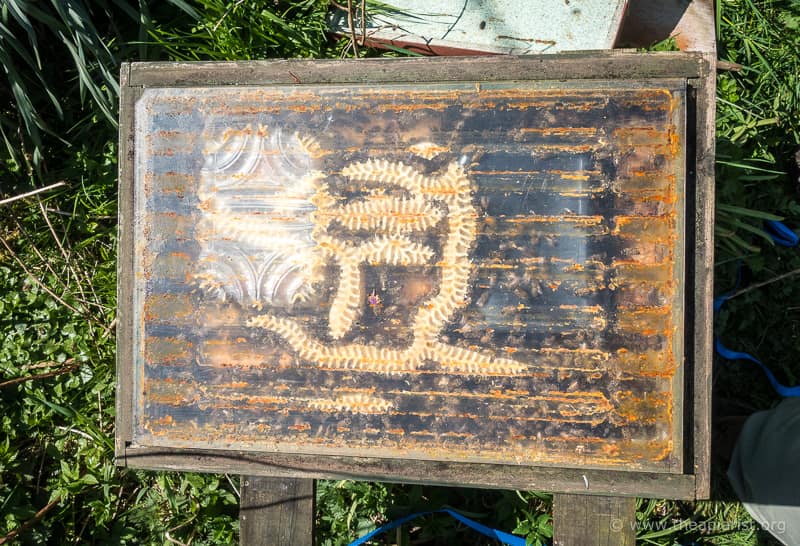
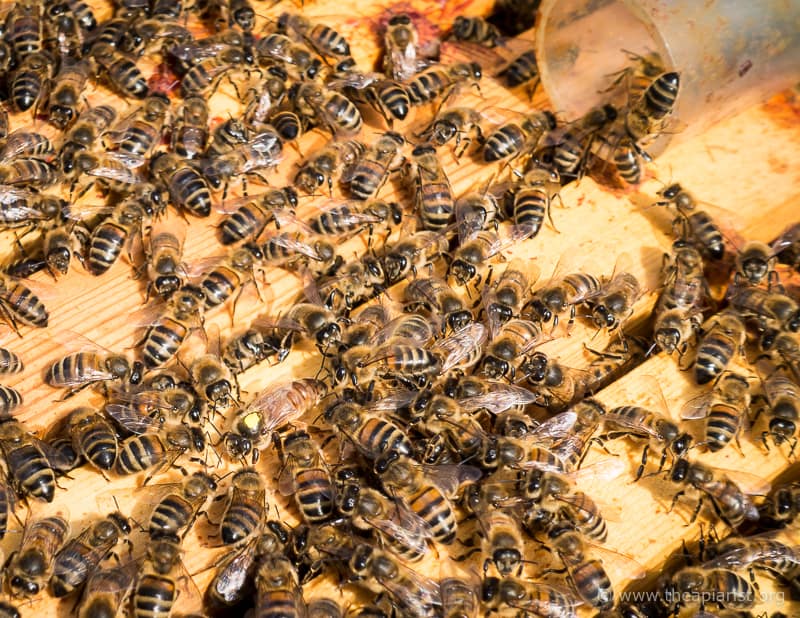
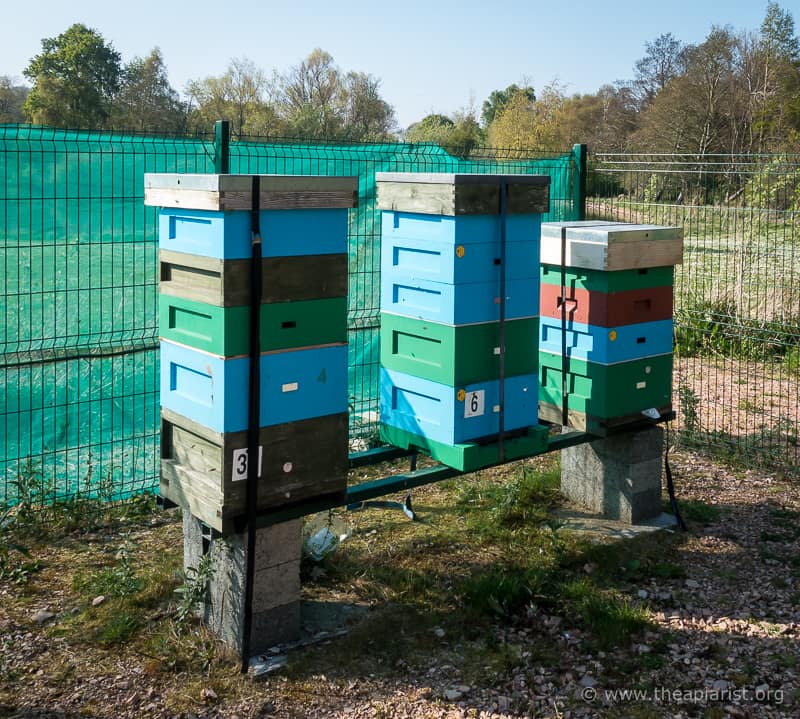
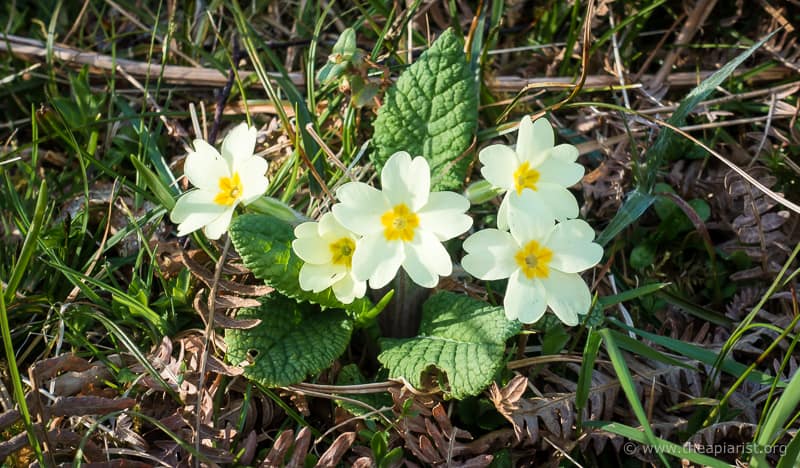
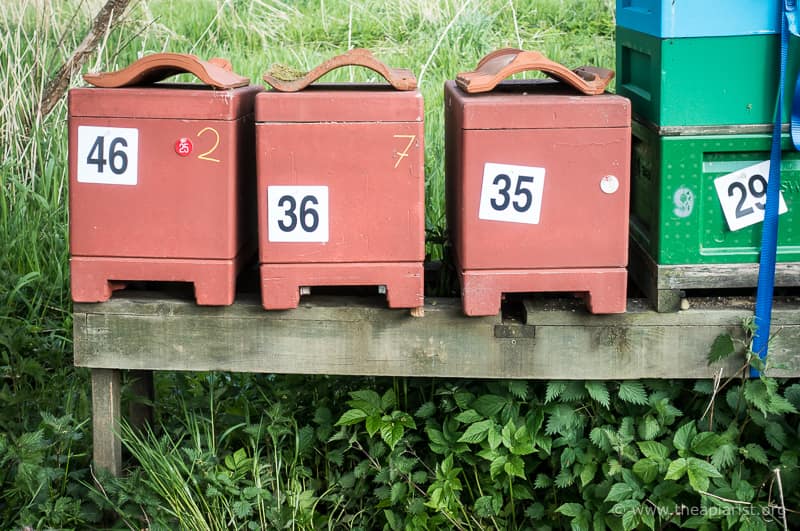
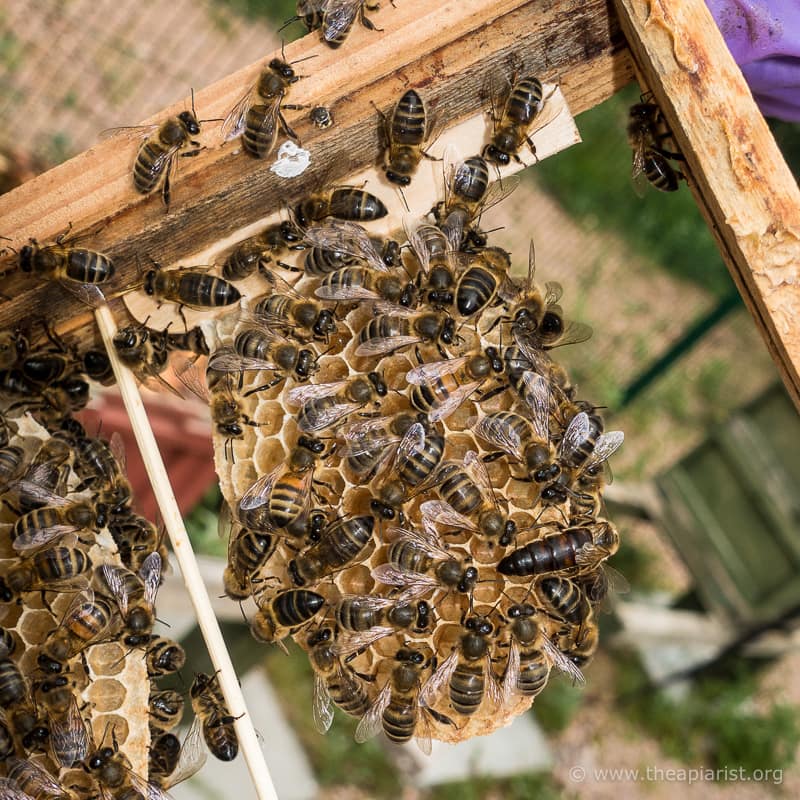
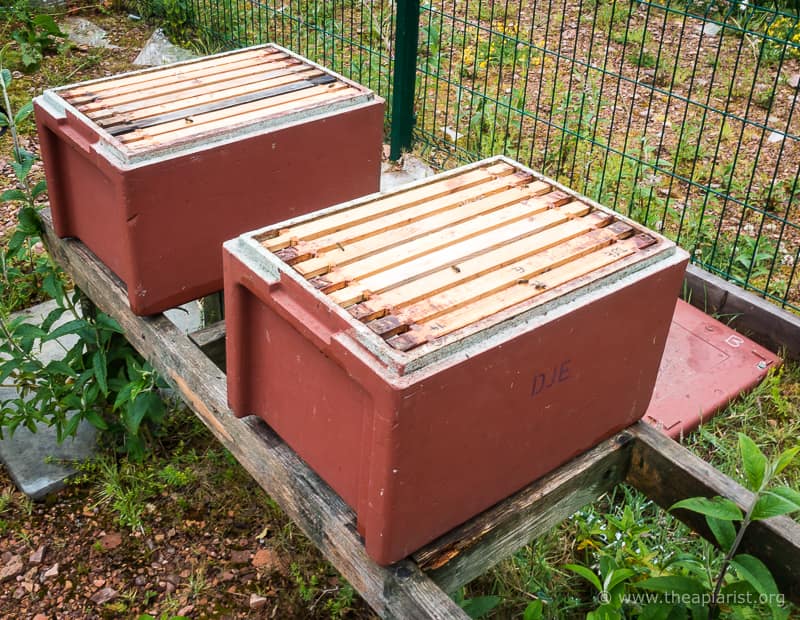
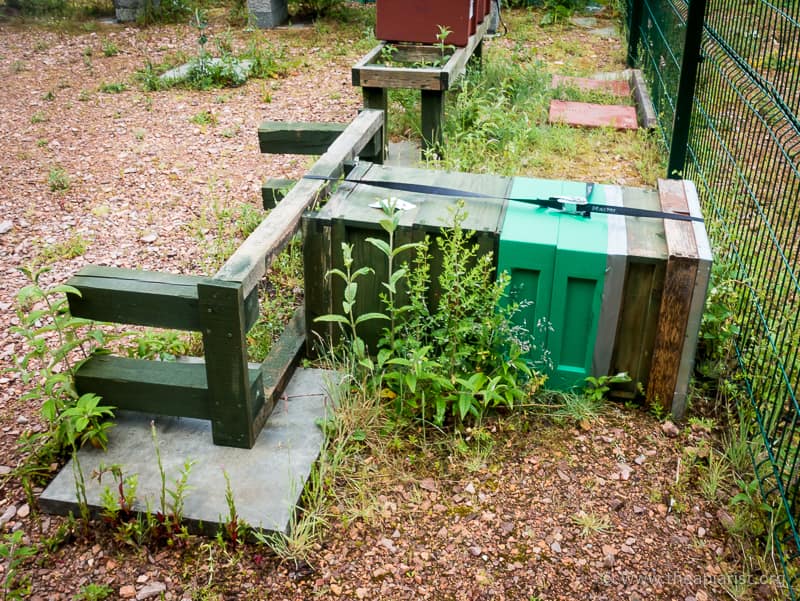

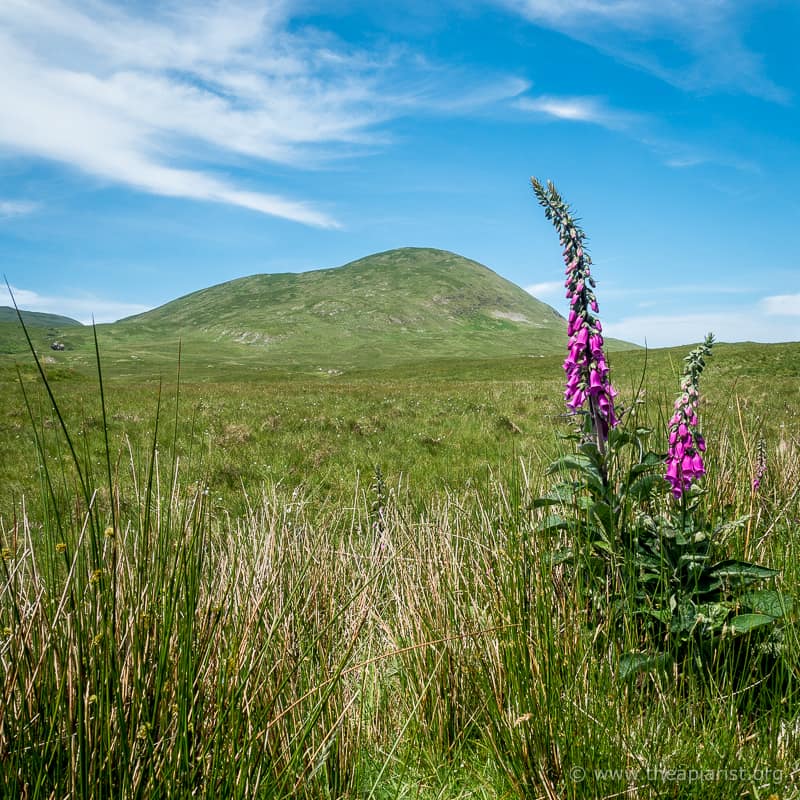
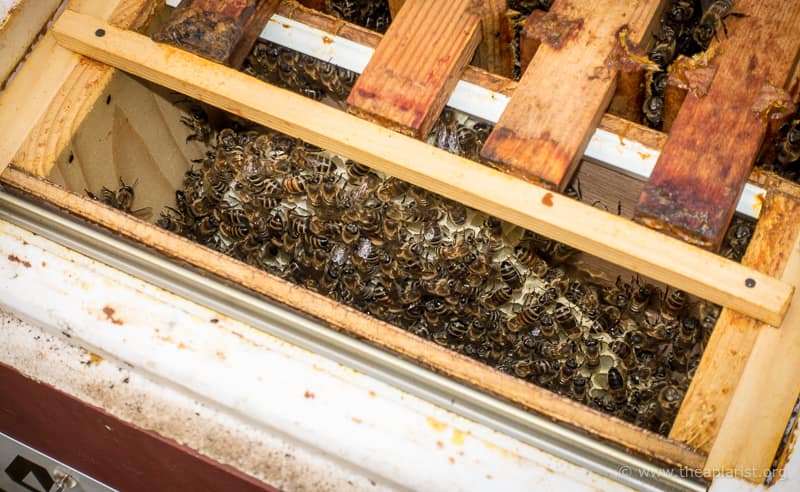
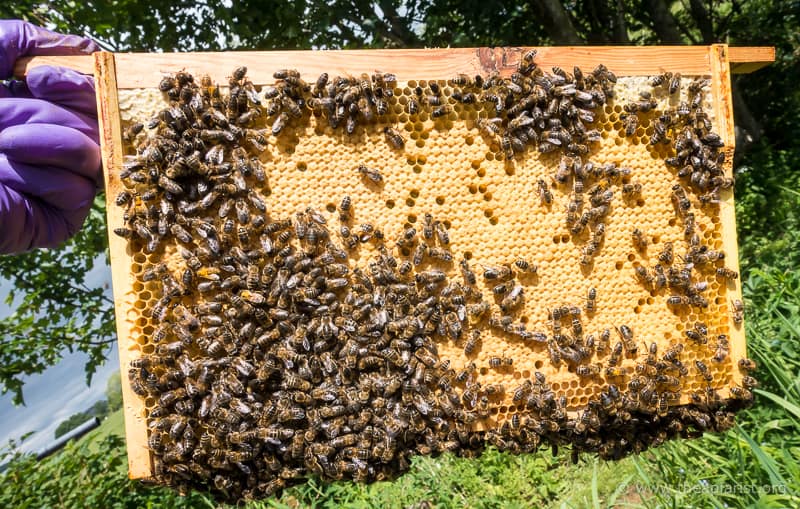
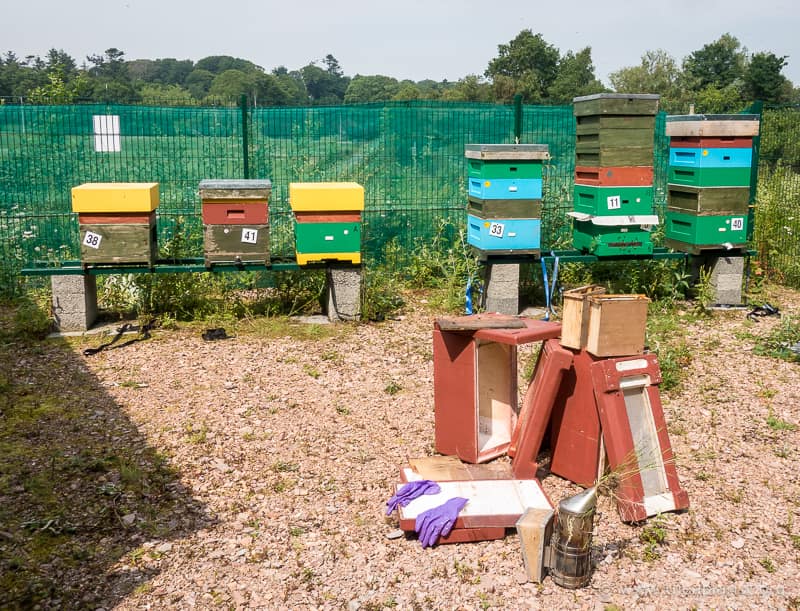
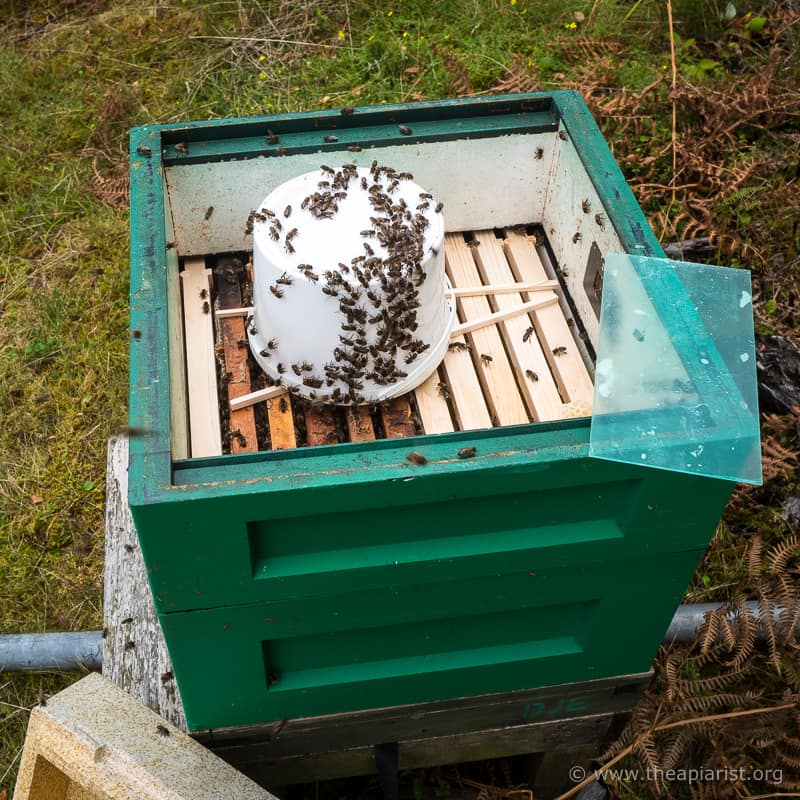
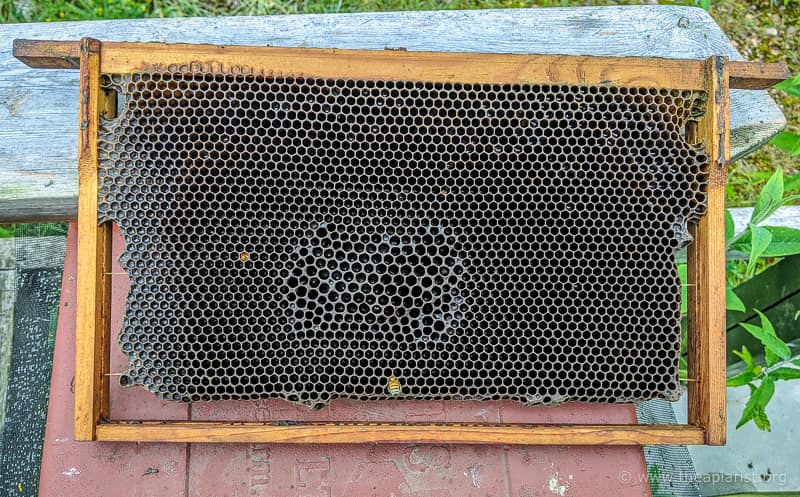
Join the discussion ...